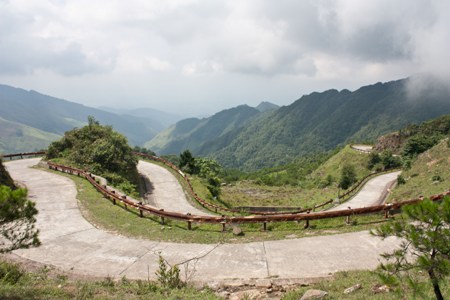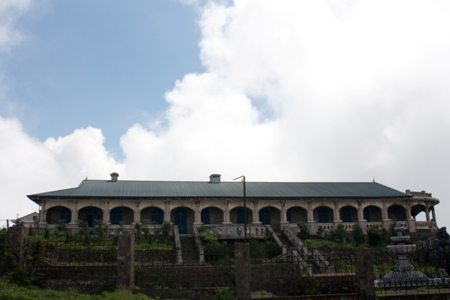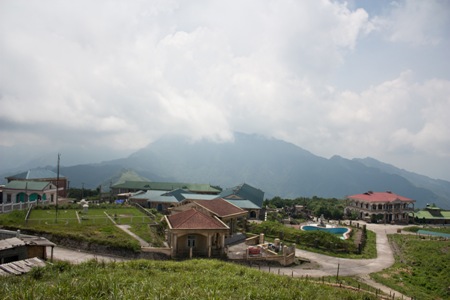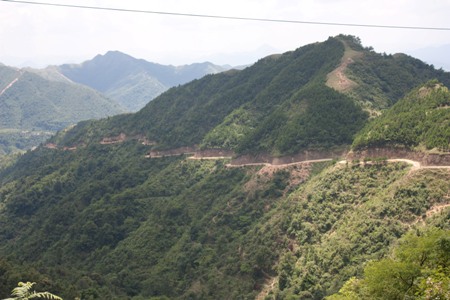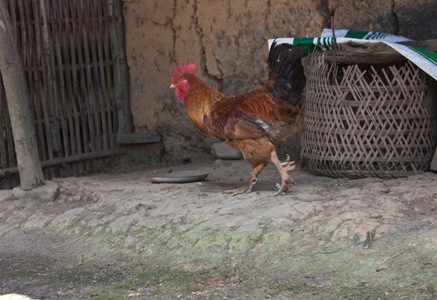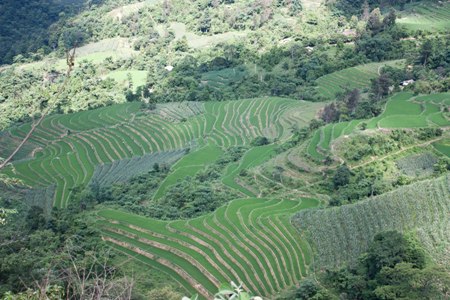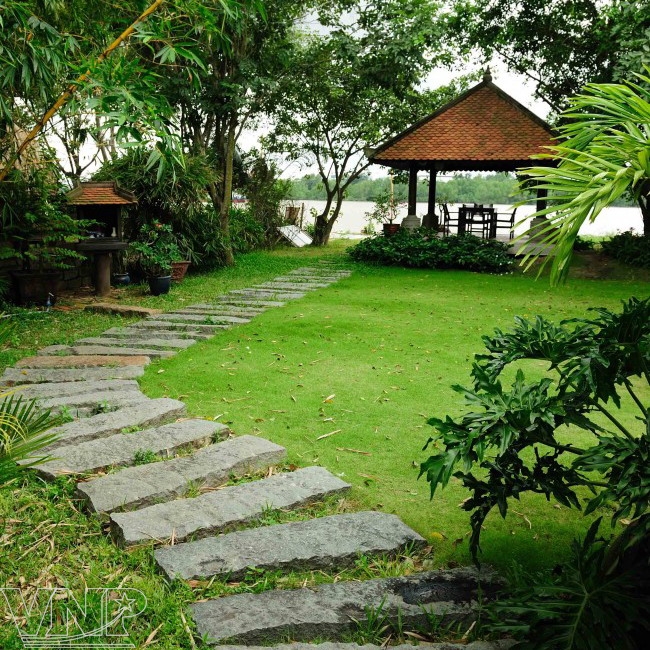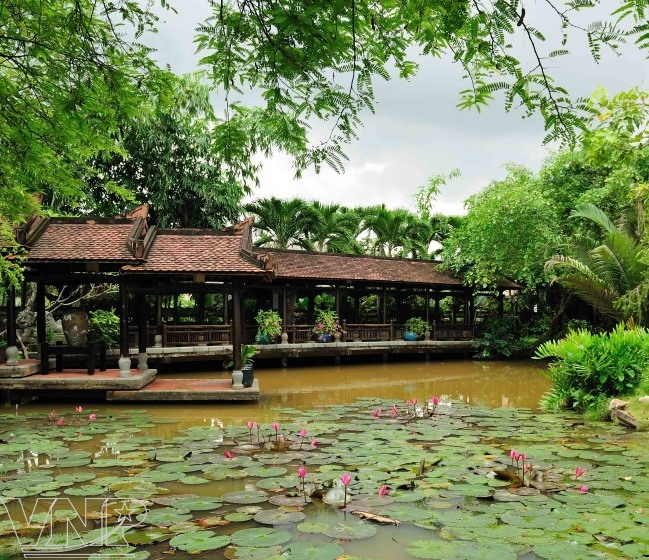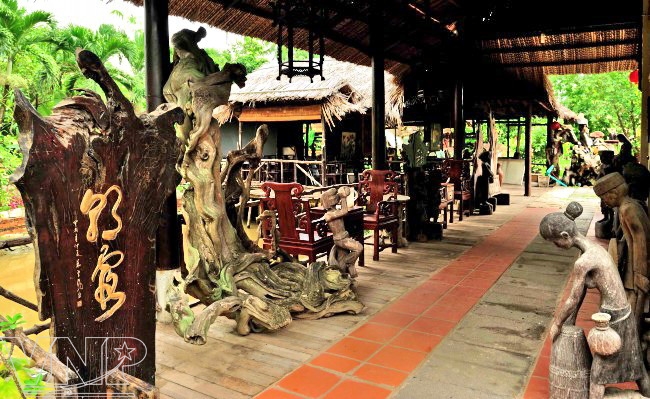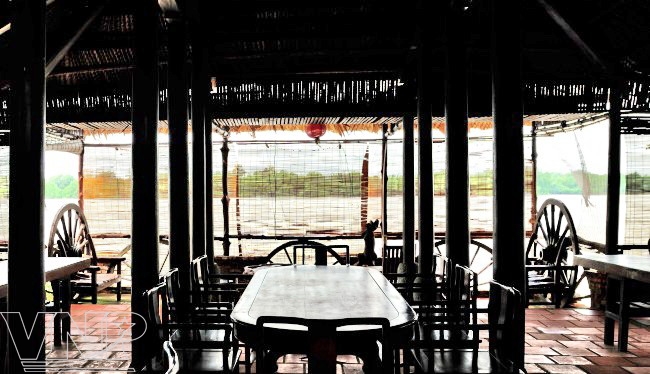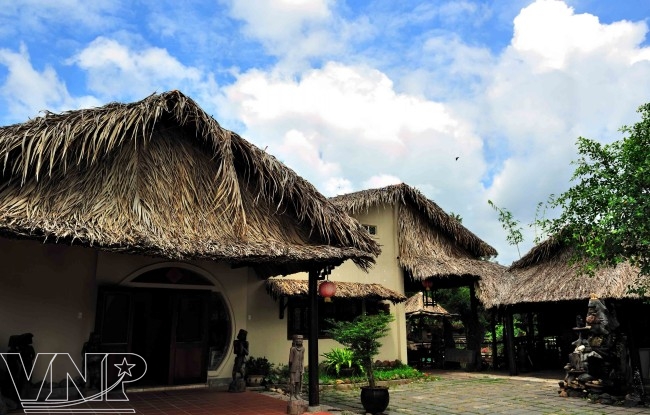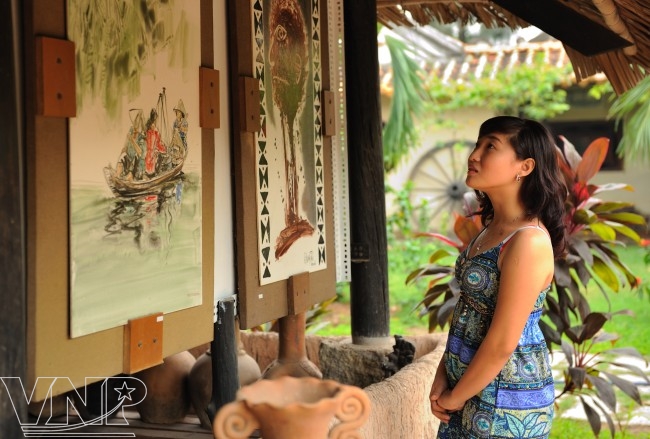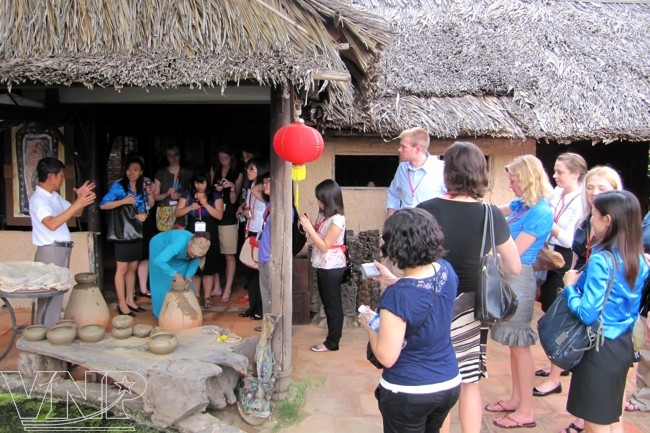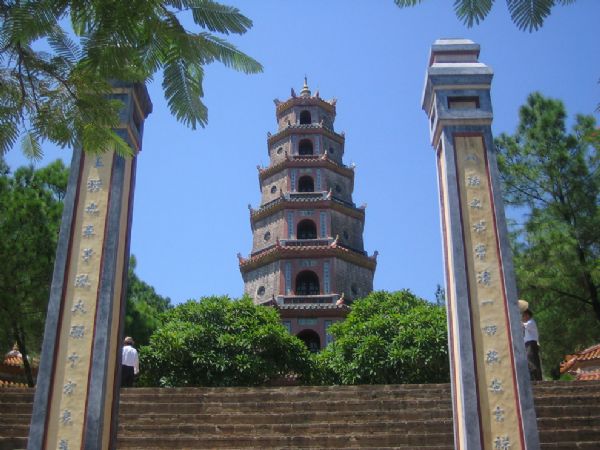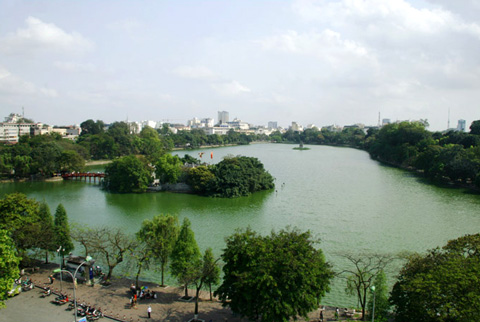
Whenever one goes through Hai Van Pass, two feelings are experienced: amazement at passing through the clouds and fear when seeing the dangerous bends of the road. After climbing through several hair-pin curves for close to an hour, you reach the crest of the Hai Van Pass. Here, if the weather affords it (which it often doesn't), there are views to both the North and the South. The pass forms an obvious boundary between North and South Vietnam, and if proof were needed, you need look no further than the fortifications built by the French and then later used by the South Vietnamese and the Americans. You will of course want to stop here if you make this trip, but be warned that you will have to fight off a large band of souvenir and snack sellers who are among the most aggressive I encountered during the whole trip.
With sudden curves and blind corners, Hai Van Pass is likened to an arrogant but beautiful girl challenging drivers' skills. Hai Van is considered to be the largest frontier post in Vietnam. The name “De Nhat Hung Quan”, meaning the most colossal frontier post, is engraved on an incense burner in Thai Temple.
On a journey through the land, Hai Van is always an attractive landscape, full of perilous obstacles and is the last spur of the Truong Son Range reaching to the sea. On the top of the pass are the vestiges of long ago, a fortified gateway. The gate facing to Thua Thien-Hue Province is inscribed with the three words “Hai Van Quan” and the other gate looking down on Quang Nam province is engraved “the most grandiose gateway in the world”. The entrance to Hai Van Quan looks like the entrance to an old citadel with its stone structures. Time, war, and neglect has taken its toll on Hai Van Quan, as it sits today in near ruins. The old story is only a memory, old vestiges covered with green moss, among

The most impressive about the journey is the sense of isolation you feel as you move further along. There is a strange delight about the desolate conditions, a seemingly unbroken asphalt road that cuts through a mass of forest. Below you, the green trees contrast with the breaking waves in the blue sea. And herein lies the beauty of Hai Van. While many rave about the charm of the Bao Loc mountain pass, the road is crowded with people and villages nestled along the way. But just as civilisation characterises the allure of Bao Loc, Hai Van’s beauty is closely connected to nature and its lack of population.
Lining the peak of the mountain is the immense abyss dotted with the light and dark green colours of the trees. The scene is capped off with fanciful clouds flying across the sky. The area is a perfect place to have a cup of coffee and contemplate the scene, looking over Hai Van as if from the heavens as the trees blow with the wind.
Hai Van is well know for its dangerous roads, and accident warning boards carefully appear regularly along the side. It’s a surprising sight to see the animation and modernity at the peak as foreign visitors buzzed about buying souvenirs. Those who do not make it to the peak would have a hard time believing there was such a busy trading and modern scene, as foreign women made their way up the rough staircase at the Hai Van Quan ancient vestige to take photos.
Whatever endowed by nature, time by time and by hands of man will be something of humanitarian values. Coming to Hai Van is to come to the sanction of two land, to satisfy the peak-conquering philosophy, to mix ourselves in to echo of heroic songs of Vietnamese ancients when they went to find new lands to be emotional to prolong past of the Center region where suffering a lot of losses in the course of finding and protecting the nation.
Hai Van Pass will satisfy your desire to conquer high peaks and remind you of the glorious past of the Viet people. Moreover, from the pass, on nice days, visitors can enjoy the whole vista of Danang, the Tien Sa seaport, Son Tra Peninsula, Cu Lao Cham Island and long sandy beaches.
The 21km that stretch over the Hai Van mountain pass may sound like a challenging journey, but after having done, it is certainly that you will find it is one worth taking.


